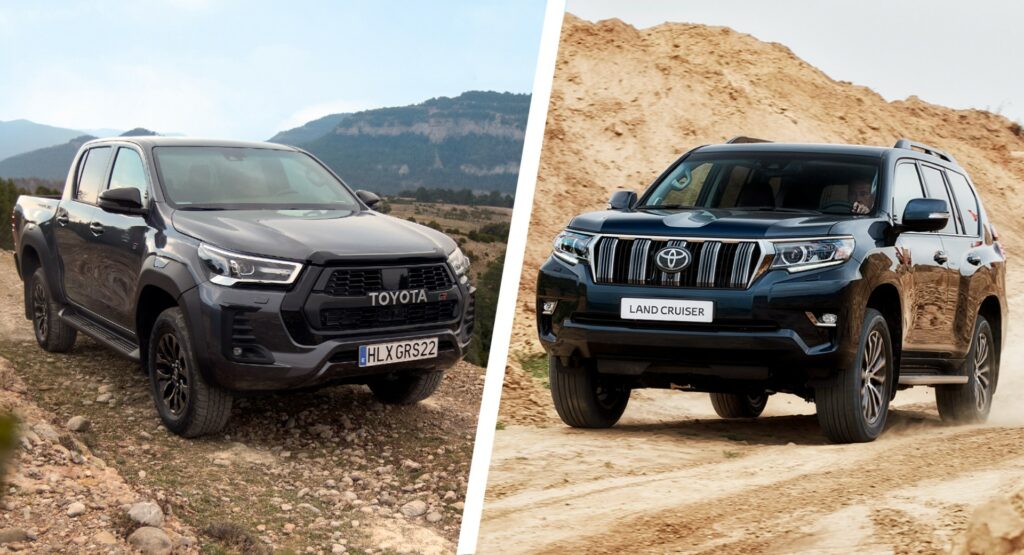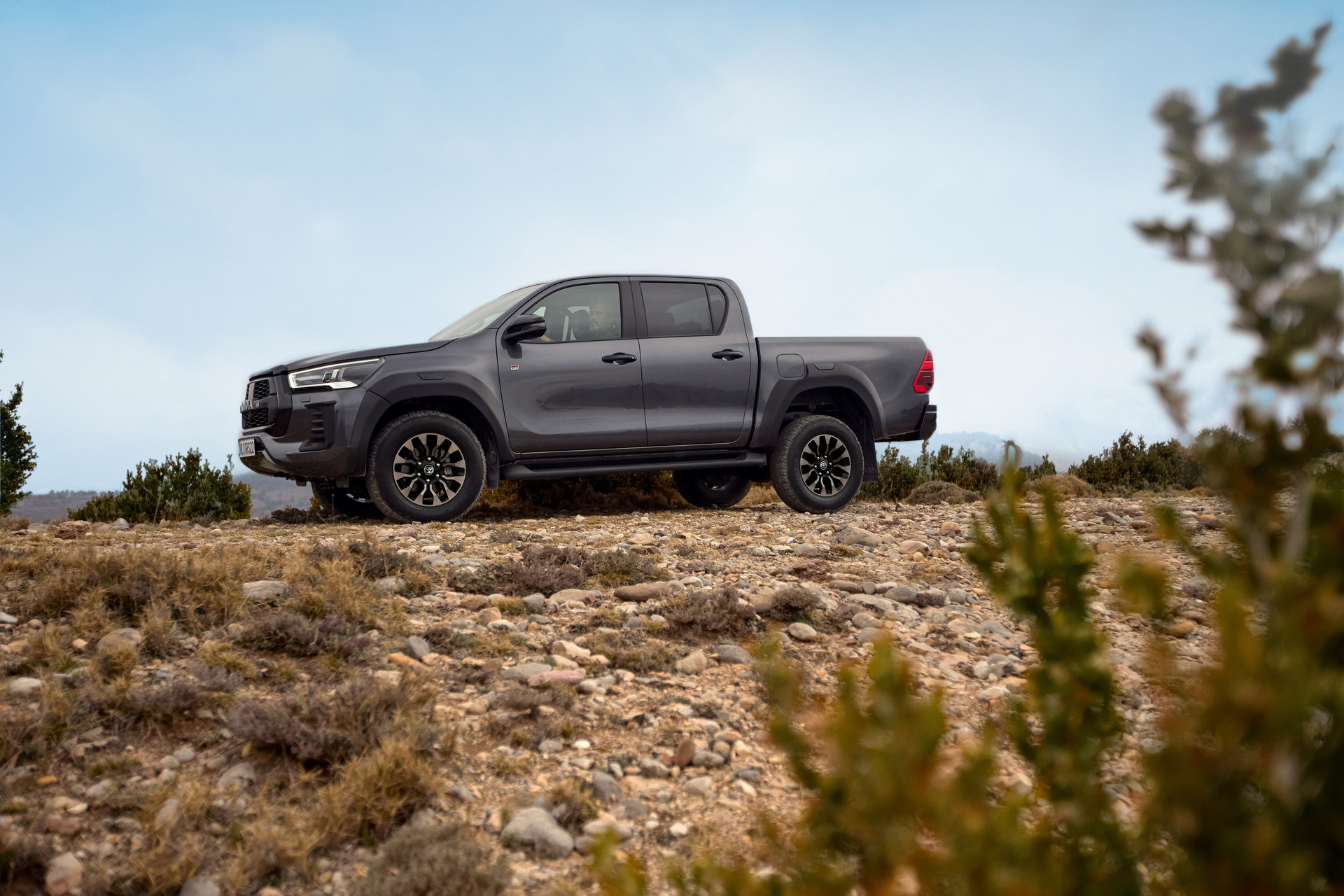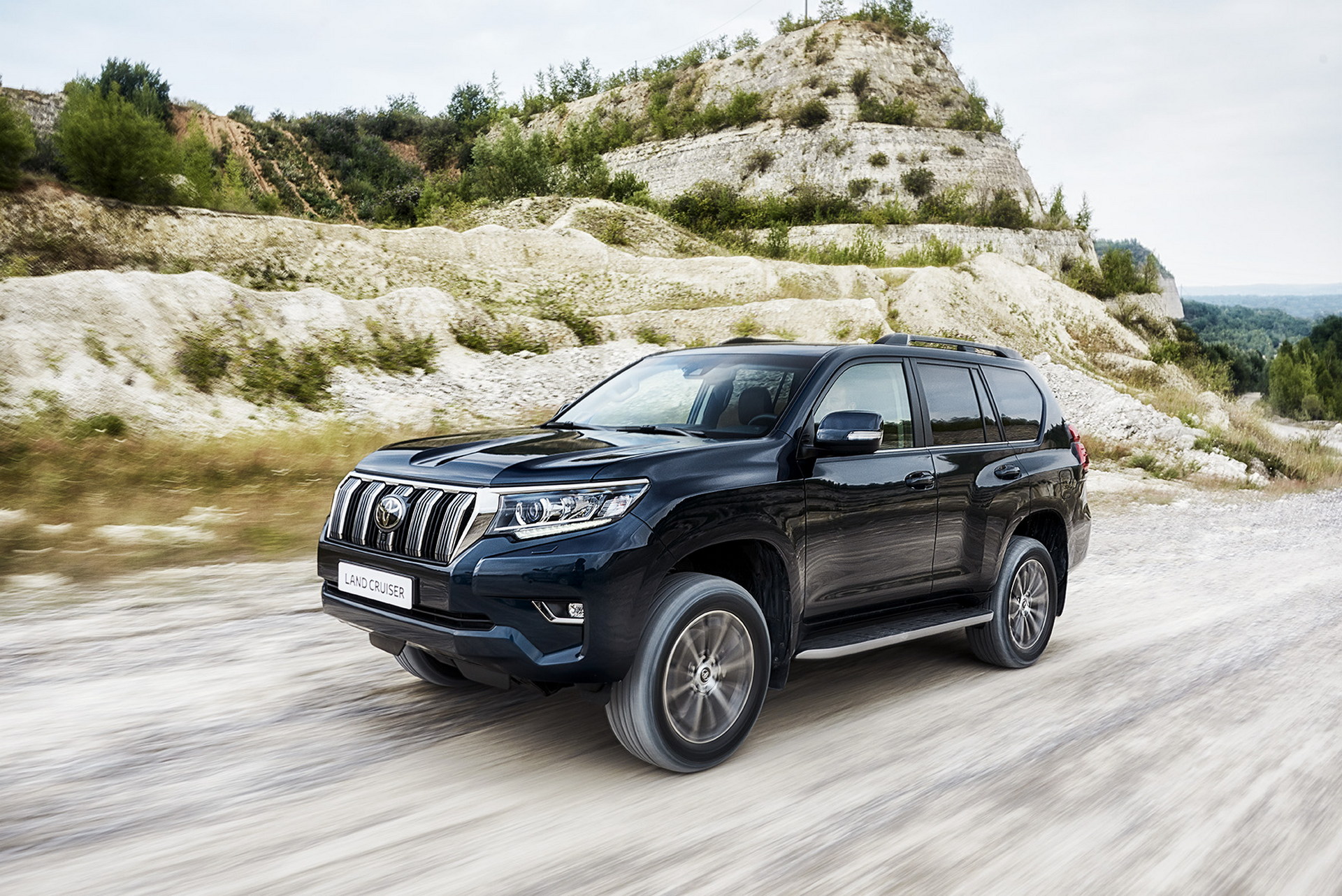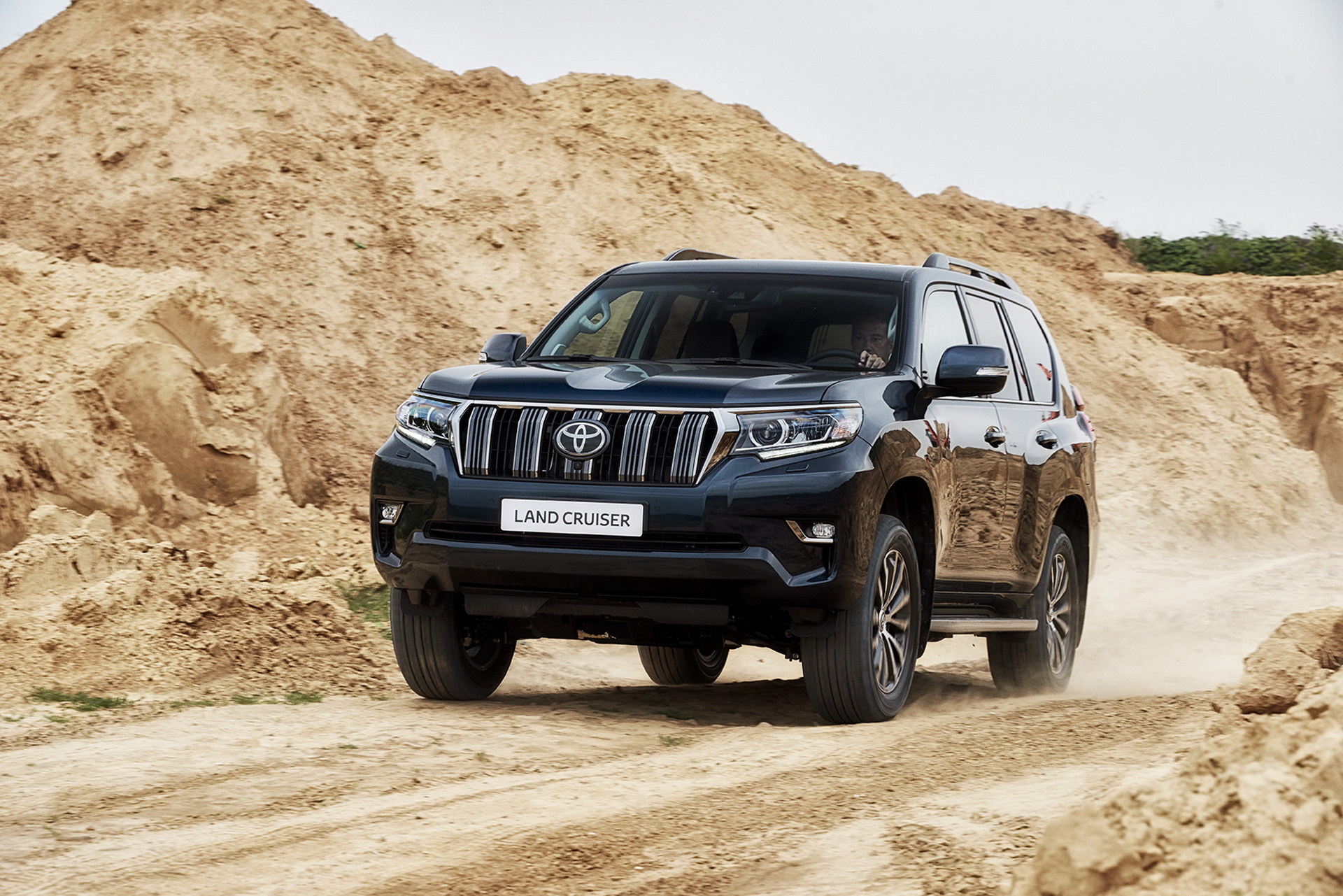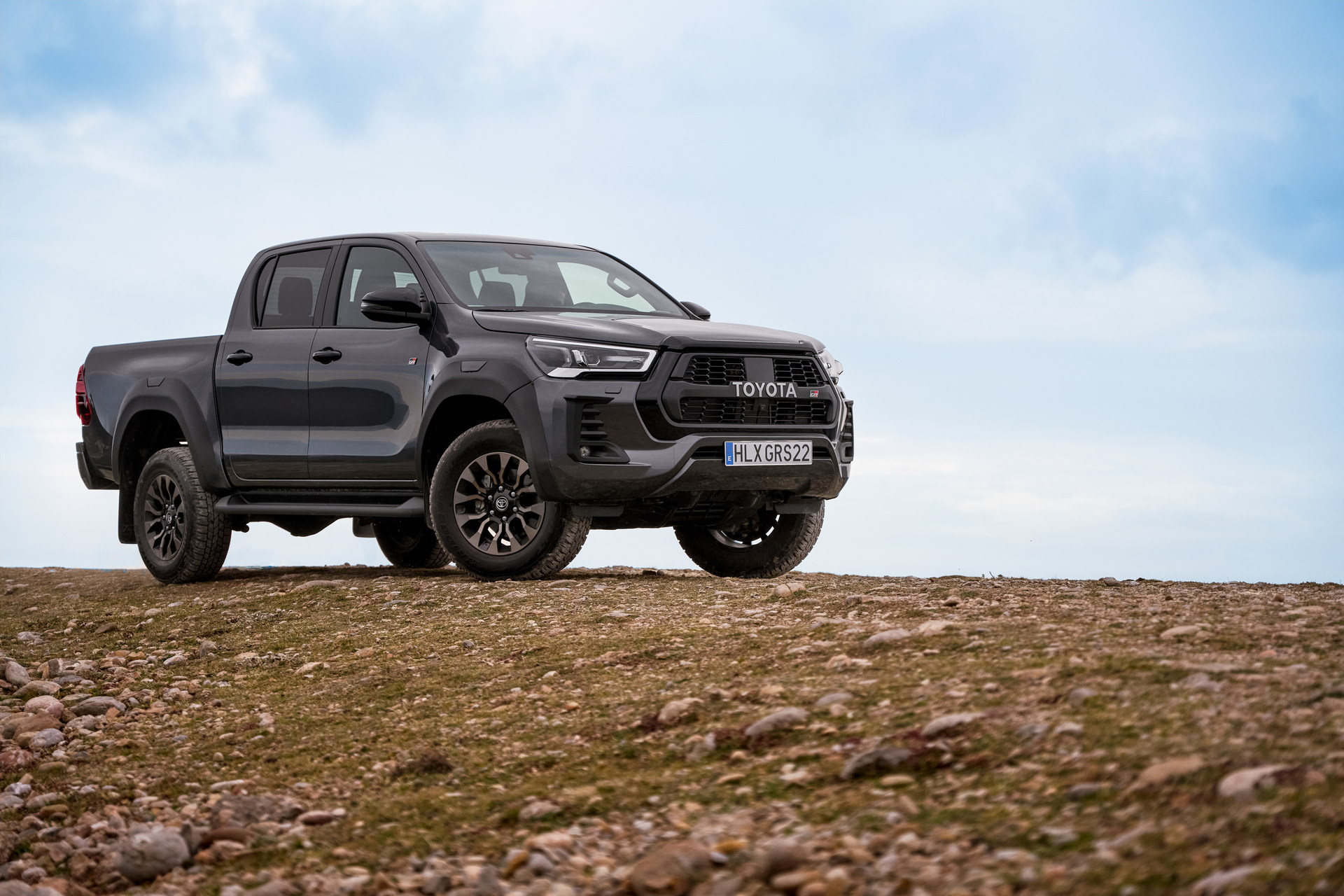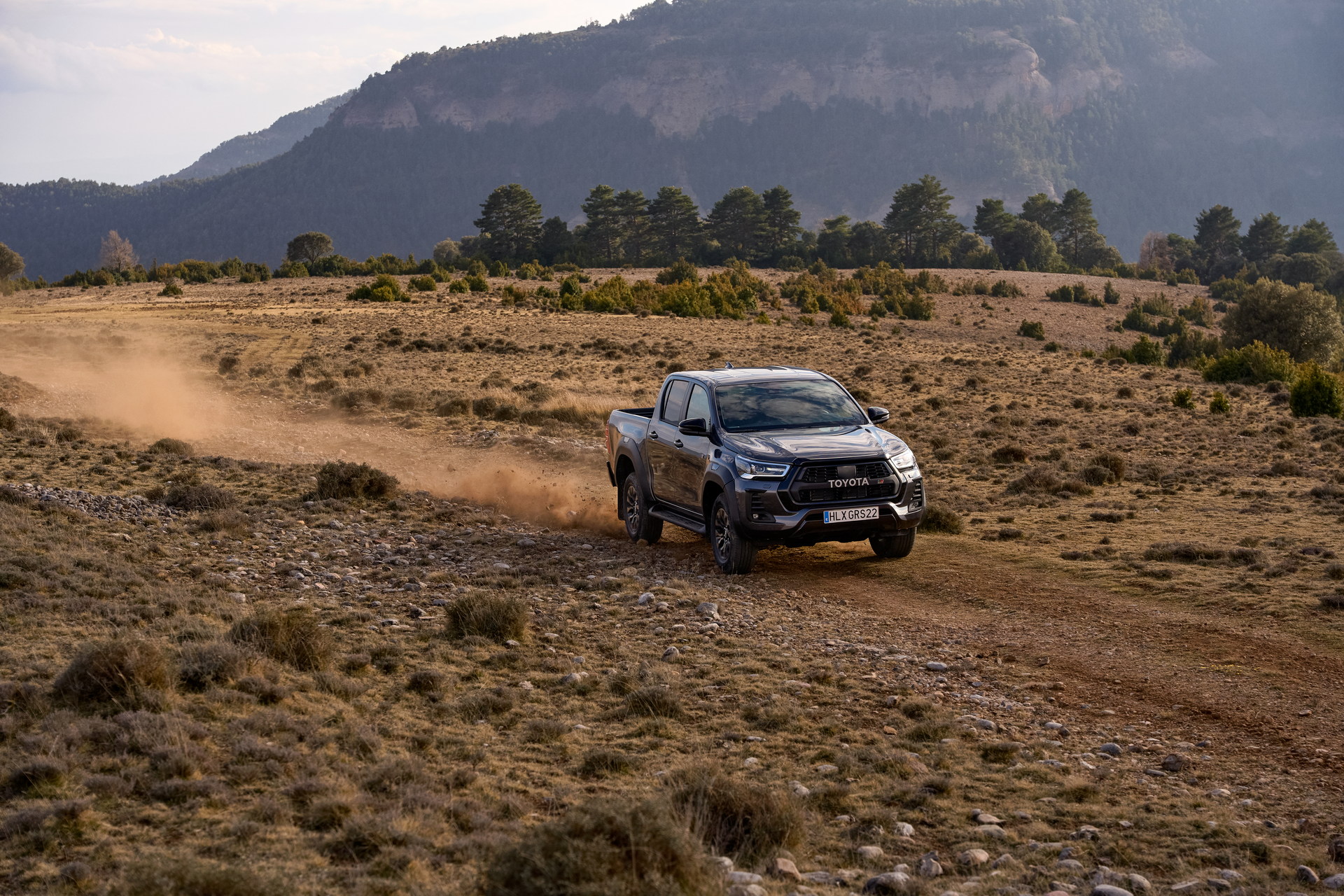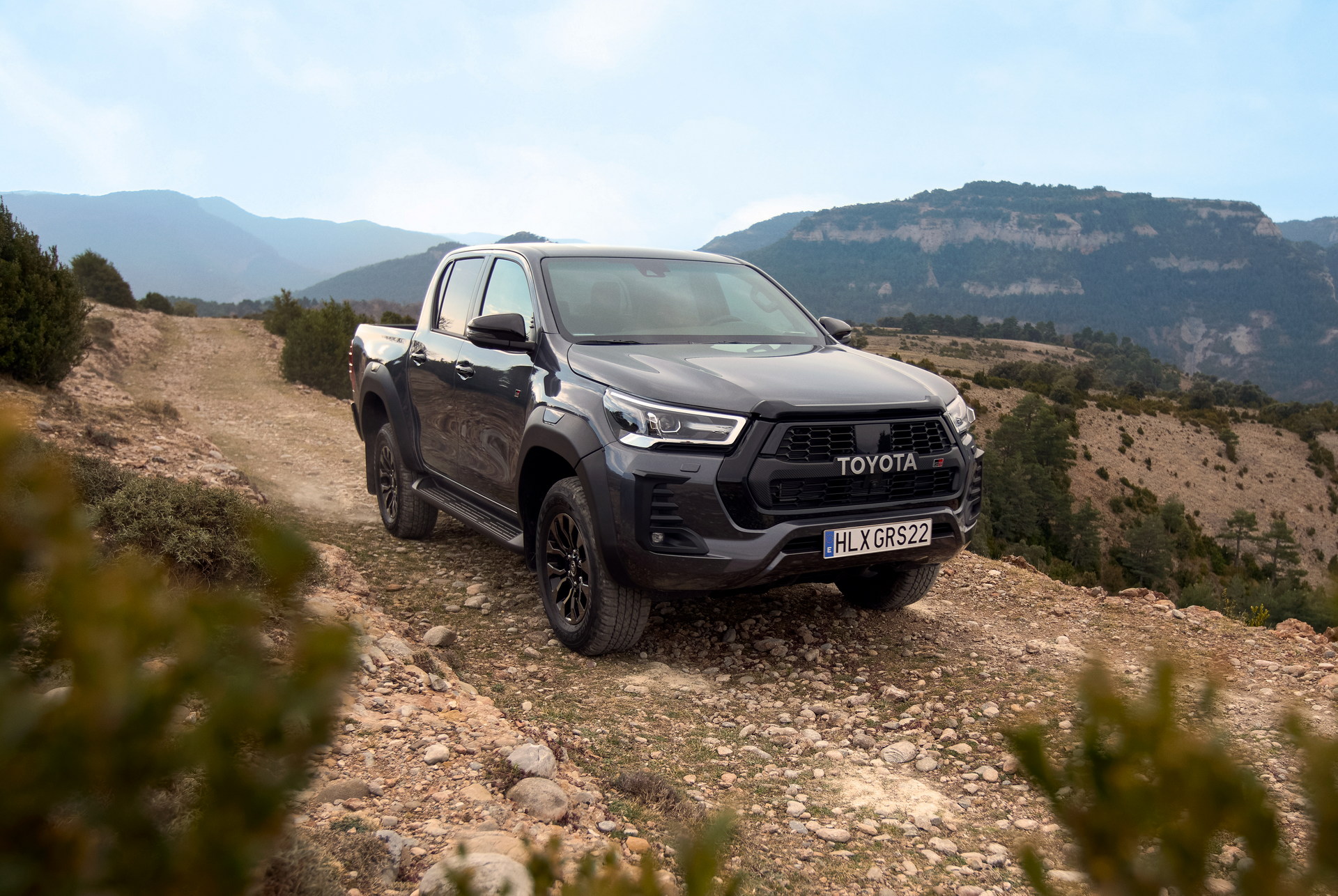Toyota announced that from the first quarter of 2023, the diesel-powered Land Cruiser and Hilux in Western Europe will be made compatible with HVO100, a fossil-free fuel made from 100 percent renewable sources.
The Land Cruiser 150 Series ladder-frame SUV and the Hilux pickup – including the pictured GR Sport variant – will be joining the Stellantis-based Proace family of LCVs which is already compatible with the HVO100 fuel.
For those not familiar with the matter, the HVO100 name stands for “hydrated vegetable oil”, which means it can be produced by either vegetable oils (palm, rapeseed), or waste cooking oil. Still, it meets the EN 15940 European quality standard for paraffinic diesel, while it has a higher cetane number and a lower sulphur/aromatics content than regular diesel.
Also Read: Diesel Not Dead Yet As Toyota Is Reportedly Developing A Hybrid
In order for its diesel engine to be compatible with the HVO100 which is less dense than diesel, Toyota made adjustments to the fuel injection system for increased fuel volume. The automaker suggests that using HVO100 “doesn’t require any special action from the customer”, and “does not affect the vehicle’s ability to run on standard diesel”. It does however bring a modest increase in the maximum engine output, although Toyota didn’t specify the numbers.
If you are wondering where does someone find this fossil-free diesel fuel, Europe already has around 1,000 fuel pumps supplying HVO100 in gas stations across Belgium, Denmark, Finland, Estonia, Latvia, Lithuania, the Netherlands, Norway and Sweden. Toyota believes that as more vehicles will be compatible with the HVO100, production will increase from the current 4 million tonnes per year to 15.5 million tonnes per year by 2030.
Besides its electrification strategy, Toyota and other Japanese automakers have been quite active in testing alternative fuels in a quest to keep the combustion engine alive for longer. Toyota is using experimental racecars to test hydrogen-powered engines and carbon-neutral fuels, which could potentially end up being used by production vehicles in the future.








